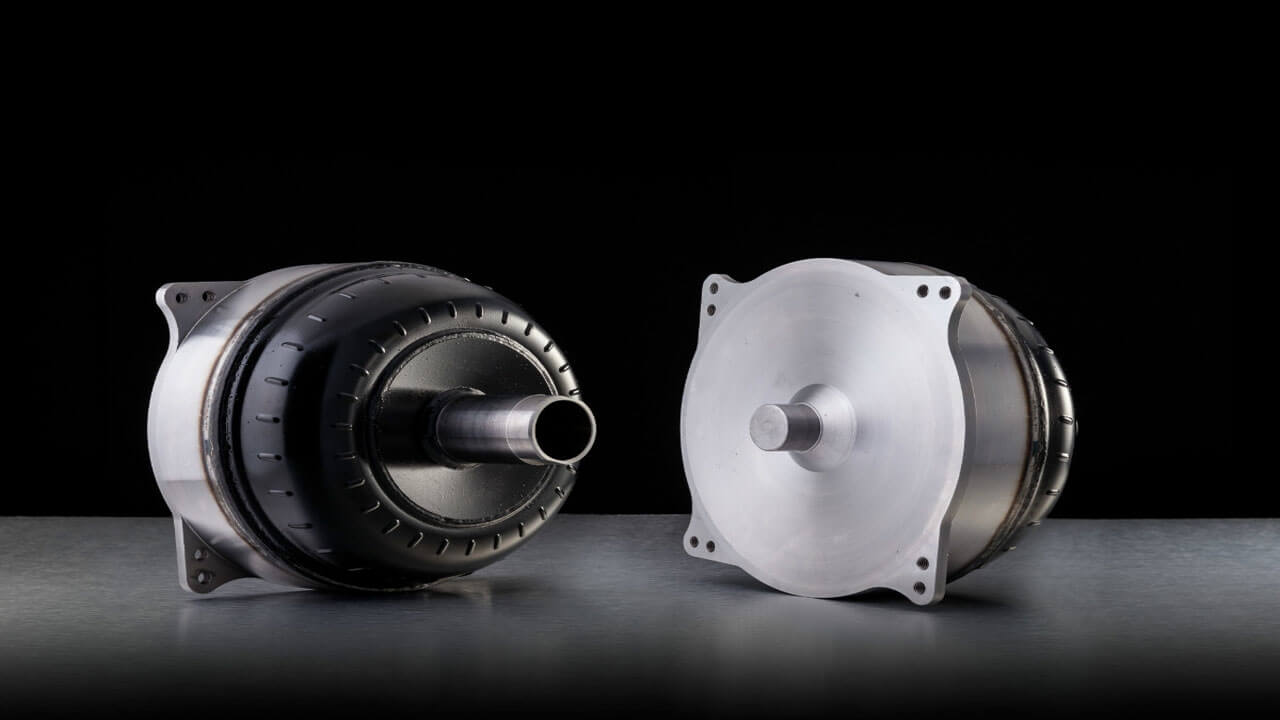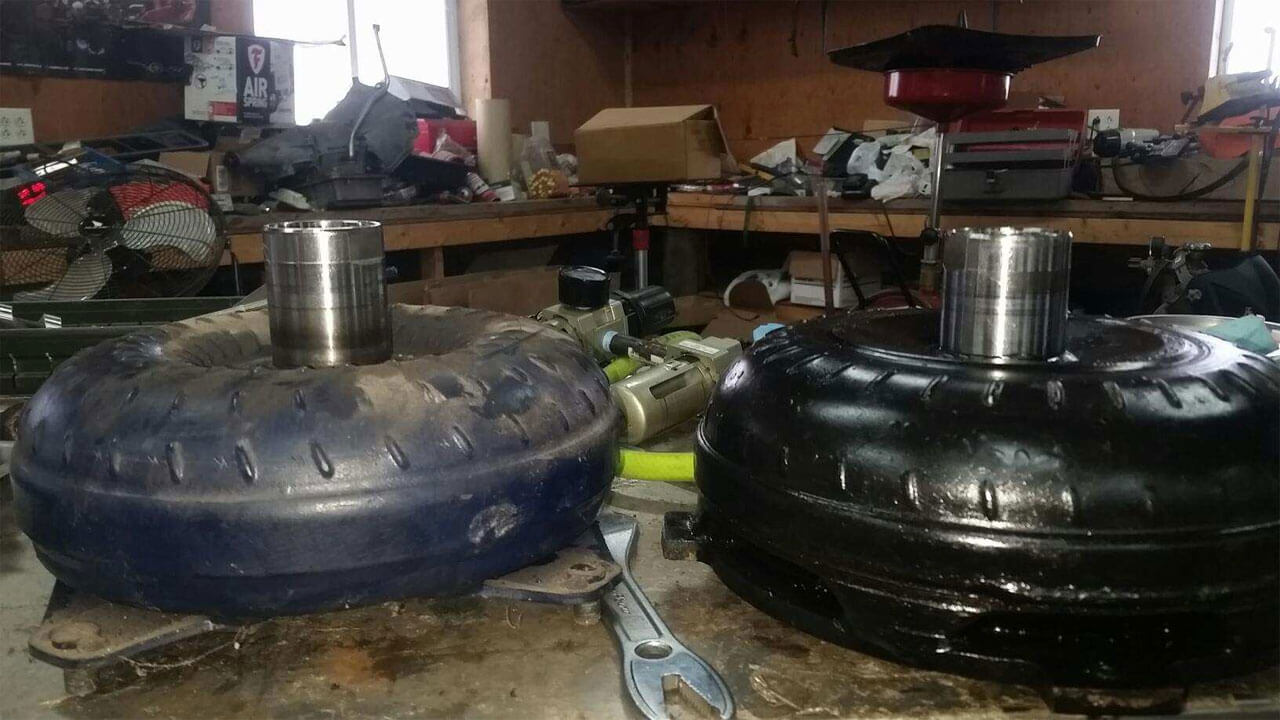Stock torque converters stall around 1,500 to 1,900rpm of engine speed, so street cars with mild engines generally require a high-stall-speed converter for smooth acceleration off of the line.
Weight can also affect footbrake stall; heavier vehicles require higher-stall speeds for their footbrake pads to lock.

The Impeller
The impeller is a small disc with curved blades that helps circulate coolant into a turbine. Coolant enters from its center and is forced outward by the spinning impeller, similar to how washing machines push water and clothes out of their washing cycles using their spin cycle. This propels the turbine and starts its rotation, drawing energy from its fins as it goes. That energy then passes onwards through transmission input shaft.
The stators are located between the impeller and turbine inside of a torque converter’s shell, helping direct flow into the turbine and multiplying power output. When hard acceleration occurs, however, their speeds need to catch up in order to increase torque multiplication. Occasionally however, their rotation speed slows momentarily so as to achieve torque multiplication more effectively.
Selecting an optimal stall speed for your vehicle is key to its street and strip performance. For example, high-performance racing torque converters typically are rated for their ability to take hold when engine RPM hits between 2,400- and 2,600rpm.

The Stator
Modern torque converters can enhance engine output two to three times, enabling faster acceleration than your transmission would permit. That power is then transferred through its rear end gears to reach tires via drive shaft.
Torque converters are controlled by your engine’s front pump to provide hydraulic pressure for operation and lubrication, with fluid moving aggressively through their outer shell and into their stator with its angled fins that direct fluid toward their turbine.
The stator also contains a one-way clutch that allows fluid to return back into the pump. This feature enables fluid to return to the turbine and be aggressively directed into it again, multiplying your engine’s torque. A stock converter typically features a stall speed between 2,400-2,600rpm; weekend racers may prefer higher stall speeds to optimize their engines’ power curve on track.

The Clutch
Torque converter clutches are like those found in an automatic transmission, except on an unprecedented scale. Each clutch is composed of a friction disc attached to the flywheel and pressure plate on a drive shaft, acting together.
The torque converter drain plug has an alignment hole on its plate; should it become leaky, this could allow debris or grime into the fluid and potentially harm stator bearings and turbine fins over time.
The plate also serves as a seal to keep fluid from leaking out of your car’s fluid system, and you can find replacement seals by searching online parts catalogs. Damaged torque converter symptoms include slipping and stalling; knowing what signs to look out for can help detect problems early and schedule service appointments with Circle-D for repair as soon as possible. If your transmission is experiencing difficulties, reach out today so we can answer any questions or schedule service appointments at Circle-D.

The Turbine
Torque converters consist of three major components – a centrifugal pump, turbine and stator. The centrifugal pump propels transmission fluid towards the turbine where its fins spin to transmit torque directly into transmission lines while the stator acts as a barrier, diverting fluid towards impeller for multiplication of torque output.
Stock torque converters typically “stall” between 1,500 to 1,900rpm of engine speed, while street-performance torque converters feature higher stall speeds to improve traffic light operation, smoother gear changes and increased output power at mid to high engine speeds.
Higher stall speeds offer additional advantages during initial acceleration, providing more power to the rear wheels for faster initial acceleration – exactly what weekend racers seek out. A properly functioning torque converter may even reach 2.5:1 crankshaft output ratio during initial acceleration before gradually losing multiplication as engine and transmission speeds rise.